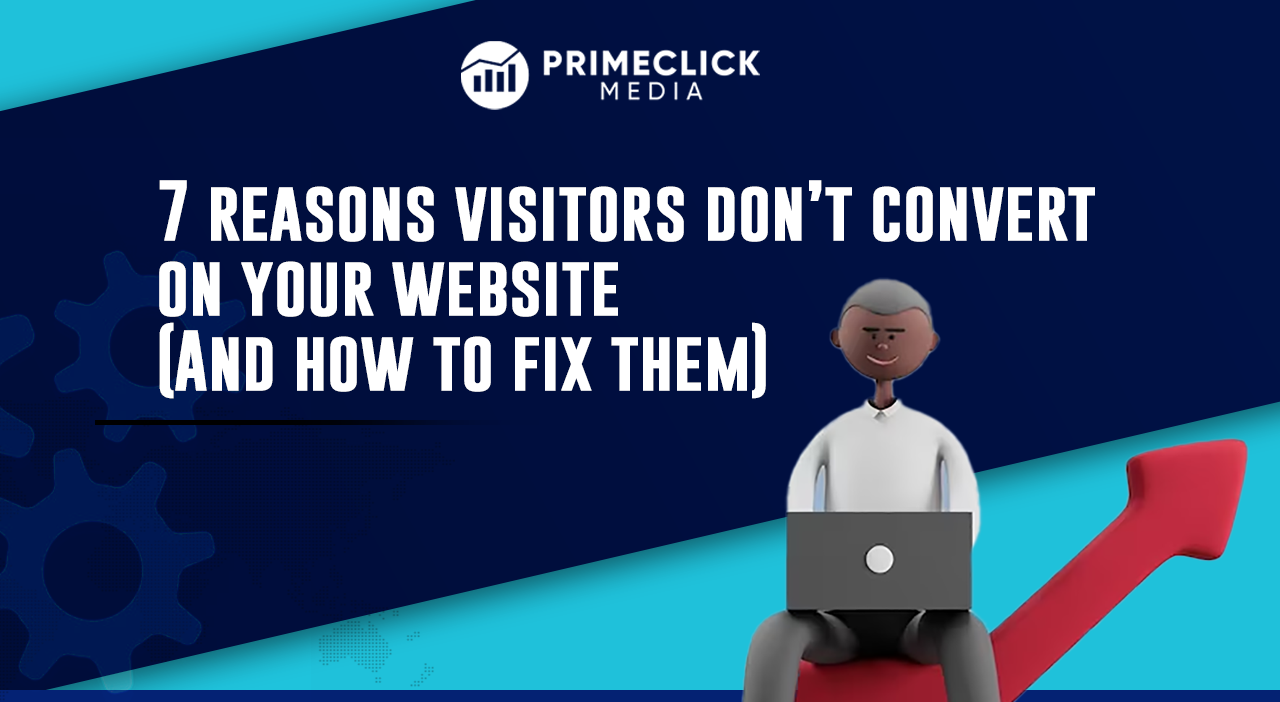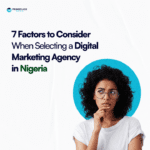
Are you frustrated by the lack of conversions on your website despite having good traffic? You’re not alone. Many website owners struggle with turning their visitors into customers. But don’t worry – there are solutions to this problem. In this article, we will uncover seven common reasons why visitors don’t convert on your website and provide actionable tips to fix them.
You don’t have to settle for mediocre conversion rates. By understanding these seven reasons and implementing the suggested fixes, you’ll be on your way to creating a high-converting website that drives the results you desire. So, let’s get started.
Understanding Conversion Rates
A high conversion rate indicates that your website is successfully persuading visitors to take the desired action, while a low conversion rate might suggest that there are barriers preventing visitors from completing the desired action. However, note that conversion rates can vary depending on various factors, such as the nature of your business, the industry you’re in, and the type of audience you’re targeting.
Improving your conversion rates requires identifying the reasons why visitors are not converting and implementing strategies to address those issues. Let’s explore the seven common reasons why site visitors don’t convert and discuss how you can fix them to boost your conversion rates.
1. Poor Website Design and User Experience
The first reason why site visitors don’t convert is poor website design and user experience. Your website is often the first impression visitors have of your business, and if it looks outdated or unprofessional, visitors are less likely to trust your brand and take the desired action.
To fix this issue, invest in a modern and visually appealing website design that aligns with your brand identity. Ensure that your website is easy to navigate, with clear and intuitive menus and navigation elements. Optimize your website for mobile devices as well, as an increasing number of users access websites from their smartphones and tablets.
2. Lack of Trust and Credibility
Another reason why site visitors don’t convert is a lack of trust and credibility. Visitors are more likely to convert if they trust your brand and believe that you can deliver on your promises. If your website lacks trust signals, such as customer testimonials, reviews, and security badges, visitors may hesitate to take the desired action.
To build trust and credibility, include testimonials and reviews from satisfied customers on your website. Implement security measures, such as SSL certificates and trust seals, to assure visitors that their personal information is safe and secure. Additionally, make it easy for visitors to contact you if they have any questions or concerns.
3. Complicated or Lengthy Checkout Process
A complicated or lengthy checkout process can be a major deterrent for site visitors to convert. If the process of making a purchase or completing a form is confusing or time-consuming, visitors are more likely to abandon the process and look for alternatives.
To fix this issue, streamline your checkout process and make it as frictionless as possible. Simplify the form fields and only ask for essential information. Offer guest checkout options to eliminate the need for visitors to create an account. Provide clear progress indicators, so visitors know how many steps are involved in the checkout process.
4. Ineffective Call-to-action (CTA) Buttons
One of the most critical elements of your website that can impact conversions is the call-to-action (CTA) buttons. If your CTAs are unclear, uninspiring, or poorly placed, visitors may not know what action to take or be motivated to take it.
To create effective CTAs, use clear and concise language that tells visitors exactly what they need to do. Use action verbs to prompt visitors to take action, such as “Buy Now,” “Sign Up,” or “Get Started.” Make your CTAs visually appealing by using contrasting colours that stand out from the rest of your website’s design. A/B testing can help you identify the most effective CTAs and optimize your conversion rates.
5. Insufficient Product or Service Information
If visitors don’t have enough information about your products or services, they may hesitate to make a purchase or take the desired action. Insufficient product or service information can leave visitors with unanswered questions and doubts, leading to lower conversion rates.
To fix this issue, provide detailed and comprehensive information about your products or services. Include high-quality product images or videos that showcase the features and benefits. Clearly outline the specifications, sizes, colours, and any other relevant details. Highlight any unique selling points or competitive advantages that set your offerings apart from the competition.
6. Slow Website Loading Speed
Slow website loading speed is not only a user experience issue but also a conversion killer. Visitors have little patience for websites that take forever to load, and they are likely to abandon the page and look for alternatives. Regularly monitor your website’s loading speed using tools like Google PageSpeed Insights or GTmetrix.
To improve your website’s loading speed, optimize your images by compressing them without sacrificing quality. Minify your CSS and JavaScript files to reduce their file sizes. Leverage browser caching to store static resources, such as images and scripts, on visitors’ devices, reducing the need to download them again on subsequent visits.
7. Lack of Social Proof
We made mention of this earlier on (in #2: Lack of Trust and Credibility). Humans are social creatures, and we tend to rely on the opinions and experiences of others when making decisions. If your website lacks social proof, such as customer testimonials, reviews, or case studies, visitors may be hesitant to trust your brand and convert.
To overcome this issue, incorporate social proof elements throughout your website. Display testimonials from satisfied customers, including their names, photos, and any relevant details. Encourage customers to leave reviews on third-party review platforms like Google My Business or Trustpilot, and prominently display those reviews on your website.
Conclusion
There are several common reasons why site visitors don’t convert, ranging from poor website design and user experience to a lack of trust and credibility. By addressing these issues and implementing the suggested fixes, you can significantly improve your website’s conversion rates.
Get in touch with us today and let us transform your website into a powerful asset that yields your desired results!





These things are apt. The social proof side caught my attention. Thanks for this post.